Traveling Medicine Show.📌📌
9/8/21—Add to these out-of-body preventative measures Vamigré’s ministering to larger health, illness and healing issues the world over, graphical plotting/breakdowns of Vamocertified anti-viral shots and other medicinals: including motion sickness pills. Vamedical will chart the spread and pathogens of COVID, MERS, SARS, ZIKA, Black Tick-borne Lyme Disease, West Nile Virus, Eastern Ebola, Chikungunya virus, syphilis, opioid/crack addiction and myriad other epidemics, syndromes or transmittable maladies. That is, the spread of flyby diseases and afflictions to the specter of epidemics, pandemics and bioterrorism.
Moreover, what specific lotions and sun blocks are appropriate and/or necessary by destination, country or region overall? Particularly with regard to climate change, time zones, indigenous plants and pests—including Monty’s Revenge, fear of flying, allergies, not to mention out and out vertigo.
Jabs or Jump Ship? (7/24/21). 📌
Cruise ship safety rules imposed on Florida by the Centers for Disease Control and Prevention were tossed out by three judges on the US Appeals Court for the 11th Circuit late Friday, vacating a decision the Circuit issued a week ago that allowed the CDC to enforce its specific COVID-19 safety rules for the Sunshine State.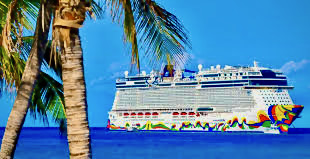
Those rules require cruise companies to administer COVID-19 tests aboard ship, reach evacuation agreements with ports their ships plan to visit and run test cruises if their ships have under 95% of passengers and crew members vaccinated against the coronavirus.
Said appeals panel concluded that the CDC “failed to demonstrate an entitlement to a stay pending appeal.” Thus Florida Governor, Ron DeSantis quickly called the CDC mandates unlawful and triumphantly proclaimed that “the cruise industry is free to safely set sail again!”
The federal agency countered that ships departing from Florida ports must still report any deaths or 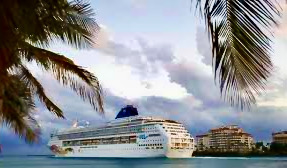 illnesses, and that cruise ships that do not follow COVID-19 regulations will be ‘gray’ labeled in the CDC’s color code system. Moreover it says federal mask mandates for public transit must continue to be enforced by cruise operators.
illnesses, and that cruise ships that do not follow COVID-19 regulations will be ‘gray’ labeled in the CDC’s color code system. Moreover it says federal mask mandates for public transit must continue to be enforced by cruise operators.
Detractors immediately called the 11th Circuit’s ping-pong reversal in effect an inconsequentially procedural non-decision in this ‘consequential matter of life and death’. But of course the appeals verdict had less to do with crew/passenger health and safety than the health of Florida’s cruise tourism industry.
The Sunshine State had sued the CDC last April to get a federal judge in Tampa to 86 the agency’s safety provisions for cruise ships sailing out of Florida’s ports, citing ‘economic harm’ to the industry.
A US District Judge so ruled for Florida, decreeing the agency’s regs become ‘milder recommendations’ (on masks, vaccinations and the rest of it). The three-judge panel stayed that decision last weekend, allowing CDC mandates to remain in place. The state then argued that it would lose “yet another summer cruise season”—already enroute to the Supreme Court. Whereupon the panel reversed its own decision in a matter of days: Power serve, anyone?
Ship Ahooey?
No denying the cruise industry is currently struggling to rebuild traveler/tourist confidence now that US ports are reopening after a 15-month pandemic induced embargo. But CDC restrictions notwithstanding, COVID viruses continue to plague tightly packed cruise vessels re-entering service worldwide—to where fully one quarter of cruise ships plying or bound for US waters are presently reporting incidents of onboard COVID-19 (and/or Delta) infection to the CDC.
At the same time, Norwegian Cruise Lines is suing the Florida Attorney General in that same court for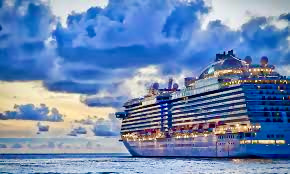 authority to follow those very CDC guidelines, and require its passengers to supply proof of COVID vaccination before boarding—even though state law bars the company from so doing. All this, while Florida virtually leads the nation in new Delta variant COVID-19 cases, and Governor Ron DeSantis continues to steadfastly naysay statewide mask and distancing guidelines, mass crowd gatherings and all.
authority to follow those very CDC guidelines, and require its passengers to supply proof of COVID vaccination before boarding—even though state law bars the company from so doing. All this, while Florida virtually leads the nation in new Delta variant COVID-19 cases, and Governor Ron DeSantis continues to steadfastly naysay statewide mask and distancing guidelines, mass crowd gatherings and all.
So it’s up to us whether to sail away or abandon ship—as in choosing a VAXed or an un-VAXed voyage, if not avoiding the Guv’s ports altogether. Otherwise, time will tell if Florida’s ‘Manatee Mutiny’ cruises on to its T/T industry’s bounty. Or if the Sunshine State grows rather grow darker by the day. (MTC…)![]()
COVID-19: Seasickness and Cruisifiction, Going Viral On a Global Scale (3/20/20).
![]() Now comes the latest coronavirus, 2019 nCoV (COVID-19), a pneumonia-like lung illness spreading worldwide. Its source has been cited to be the live animal ‘wet’ food markets of Wuhan, China—possibly transferred from bats or snakes to pangolins to humans early last December.
Now comes the latest coronavirus, 2019 nCoV (COVID-19), a pneumonia-like lung illness spreading worldwide. Its source has been cited to be the live animal ‘wet’ food markets of Wuhan, China—possibly transferred from bats or snakes to pangolins to humans early last December.
Beyond Wuhan (currently quarantined and largely deserted), the virus fanned out to surrounding municipalities, the country at large, wider Asia and around the globe. China 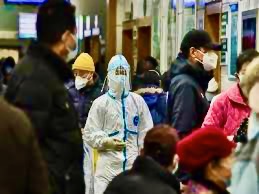 has lock-down travel restrictions on millions of its citizens. Travel warnings have been issued for two parts of Italy. The U.S. has tightened airports of entry from New York’s JFK to LAX, up and down the West Coast.
has lock-down travel restrictions on millions of its citizens. Travel warnings have been issued for two parts of Italy. The U.S. has tightened airports of entry from New York’s JFK to LAX, up and down the West Coast.
The World Health Organization has declared a global health emergency in the face of a potential pandemic that has already quashed Chinese New Year holiday festivities and sparked a worldwide run (if not hoarding) on (N95 type) surgical masks. The U.S. State Department has since issued a Level 4 Do-Not-Travel warning with respect to China visitation. Perhaps because this coronavirus seems to be passing between people of close contact; worst case: a 1-3% mortality rate.
To date, China reports 3,042+ deaths attributed to the virus, with over 80,000 diagnosed infections and counting. Borders are closing, many flights to and from China are now being cancelled by airlines such as Cathay, United, American, Lufthansa and British 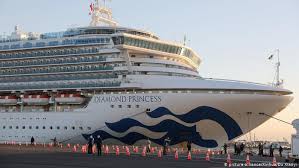 Air. Cruises are being cancelled, ships are being detained, their passengers undergoing temperature reads and other medical screening. The Diamond Princess is currently quarantined on a two-week lockdown in the Japanese port of Yokohama after some 600+ of 3,600 ‘cruisified’ passengers showed COVID-19 symptoms (44 Americans testing positive, and 34 cases) which have been spreading rapidly in such very close quarters—albeit with posh cuisine and amenities being lifeboated aboard. Deboarding and weeks of ‘camp cruiser’ quarantine in California or Texas military bases are under way, while the Golden State declares a state of emergency.
Air. Cruises are being cancelled, ships are being detained, their passengers undergoing temperature reads and other medical screening. The Diamond Princess is currently quarantined on a two-week lockdown in the Japanese port of Yokohama after some 600+ of 3,600 ‘cruisified’ passengers showed COVID-19 symptoms (44 Americans testing positive, and 34 cases) which have been spreading rapidly in such very close quarters—albeit with posh cuisine and amenities being lifeboated aboard. Deboarding and weeks of ‘camp cruiser’ quarantine in California or Texas military bases are under way, while the Golden State declares a state of emergency.
Meanwhile, Holland America’s Westerdam spins its rotors and rudder somewhere off 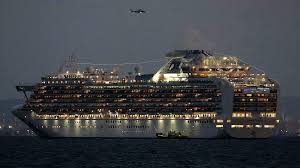 Singapore, finally offloading in Cambodia, no cases as yet reported. Another ‘pampered prison’ ship is now isolated off New York City; the latest trolling off the California coast with 3,500 Grand Princess passengers, some 45 being tested for infection. These vessels are turning out to be little more than ‘cruisinarts’ of sea-bound diseases, and their itinerary schedules are sinking fast.
Singapore, finally offloading in Cambodia, no cases as yet reported. Another ‘pampered prison’ ship is now isolated off New York City; the latest trolling off the California coast with 3,500 Grand Princess passengers, some 45 being tested for infection. These vessels are turning out to be little more than ‘cruisinarts’ of sea-bound diseases, and their itinerary schedules are sinking fast.
Update: More than 14,500+ cases have now been discovered in the U.S., from Chicago up to Seattle down to Southern California, Arizona and nationwide (with 205 deaths and counting). COVID-19 clusters are currently growing rapidly, from South Korea to Iran (50+ dead, Northern Italy 200+ and in total lockdown)—across locked down Europe, down to Brazil—now totaling 10,000+ deaths worldwide, 250,000+ cases in 90+ countries. As Covidation lists lengthen (the virus threatens to become an order of magnitude larger than SARS and is nowhere near containment)—Vamigré will continue to take the temperature, check the pulse all around. (MTC…)
VamoSapiens: Going for Health/Fitness:
VamoShaping up, how best to prepare mentally and physically for our journeys. Must we be pilates or Soul Cycle disciples, triathletes or full press gym rats to simply weather, if not maximize our travels?
Rather, travel-oriented regimens in practical moderation (jogging to walking to a variety of aerobic exercises, prep and en route). Add in rest and conditioning strength, endurance and bodily resistance, for sedentary to more strenuous travel). Along with dietary discipline and certified supplements that best bolster prospects for rewarding, enriching and unhampered movement. That is, healthy, nutritious food, snacking/eating/dining (VamoSpreads, VamoStacks, VamoSnacks) as we go—backpack to café to cuisinal restaurants…
Eat, Drink and Be Wary.
![]() Item: Tourists are dying on the exotic islands of plenty.
Item: Tourists are dying on the exotic islands of plenty.
Nine Americans have perished so far this year visiting the Dominican Republic, not long after at least four more in the Virgin Islands. Must have been snorkeling, mountain climbing or endurance running, right?
Not quite. Instead they mainly succumbed to over eating, over imbibing, recreational using or strenuous bouts of golf, laser tag, Guitar Hero or casino slots. Forget muscle strains and fractured limbs—causes of death are more likely traced to clogged arteries, pulmonary edema, not to mention overdosing on cocktails galore. Then there is the crime blotter.
The casual carnage has escalated to where the F.B.I. has entered the scenic picture to investigate the toxicological pathology, particularly in the Dominican Republic—which claims these are ‘isolated cases’ and that the country is a ‘safe destination’ for all visitors.
So says the Dominican Hotels Association, whose members lure stressed, sun-starved tourists to massive all-inclusive resorts. Here, these complexes afford visitors luxe gated playgrounds,  little or no contact with locals and all manor of pampering and gluttony. Patrons can partake in all-you-can-eat restaurants, all-you-can-drink lounges, all-you-can-score dens, and all-you-can-whatever anywhere else in the resort’s sandbox—limoing you everywhere in between.
little or no contact with locals and all manor of pampering and gluttony. Patrons can partake in all-you-can-eat restaurants, all-you-can-drink lounges, all-you-can-score dens, and all-you-can-whatever anywhere else in the resort’s sandbox—limoing you everywhere in between.
But along with indulgent comforts and bingeing spreads come more and more cases of food poisoning, pesticide contamination, even gagging on carbon monoxide. One tourist died from organ failure, after complaining about the common ‘well’ whiskey served in his hotel room’s minibar. Local authorities find it difficult to pinpoint noxious maladies, however, for their toxicology reports take 30-40 days to complete. While victims and their companions/survivors bemoan slow ambulance arrivals or agonizing waits to retrieve loved ones’ remains, plus the inflated bills for emergency/medical services.
Easier to ascertain are the physical hazards: For instance, former BoSox slugger David Ortiz being shot in the back inside a Santo Domingo bar; a woman who was attacked in her plush resort room—severely beaten and left for dead.
As for the Virgin Islands, a vacationing family of four was seriously stricken in 2015 with fumigation pesticide poisoning, noxious chemicals bleeding through room vents and air conditioners.
Taken together, such tropical countries dependent on tourism are in crisis/PR mode of late, their image of safety and security being punctured like so many party balloons—all of which puts their faux-reality dizzyland between a Rock and a Hard place.
Accordingly, potential vacationers have begun scrapping plans to take in all that the beachy Caribbean Bacchanalia has to offer. No preaching, no judgment here, but maybe it’s time to trade in a heaping house of hole cards for some healthier cardio…
Feds and the Missing Meds.
![]() Is there a medicinal supply on board? Current chronic shortages of critical medicines throughout the healthcare industry has been hitting air carriers as well.
Is there a medicinal supply on board? Current chronic shortages of critical medicines throughout the healthcare industry has been hitting air carriers as well.
Each commercial flight is required by federal regulators to carry an emergency medical kit on board. Included is a supply of ‘life saving’ medicines in case of an array of inflight incidents and/maladies. Foremost among these ‘no-go’ drugs are atropine, dextrose and lidocaine—particularly to address heart and diabetes conditions. Of even more importance is epinephrine (adrenaline), for everything from coronary attacks to allergic reactions to fainting or indigestion.
Problem is, that medicinal shortage, which prompted the FAA to issue an exemption to its  on board emergency medication regulations in January 2016. More than 50 airlines, domestic and international, received four-year reprieves from the federal requirement to fully stock the above-mentioned vital drugs in their on-board emergency kits. This, instead of the agency’s annual regulatory review of such medicinal exemptions—its multi-year policy designed to hold sway at least during periods of specific drug sparsity.
on board emergency medication regulations in January 2016. More than 50 airlines, domestic and international, received four-year reprieves from the federal requirement to fully stock the above-mentioned vital drugs in their on-board emergency kits. This, instead of the agency’s annual regulatory review of such medicinal exemptions—its multi-year policy designed to hold sway at least during periods of specific drug sparsity.
But pressure is now building (Congress included) to lift the 2016 blanket exemption, for travelers should not have to fear that any inflight emergencies (however rare) would go untreated for lack of FAA-mandated lifesaving medications, shortages notwithstanding.
Vamigré will be keeping tabs on these drug shortages and exemptions, or airlines that may be underdosing on medical kit compliance—delivering our brand of tough medicine while supplies last or the need arises—whichever happens to come first…![]()
Update: Health and Safety Aloft.
Recent incidents aboard airliners underscore traveler concerns over medical/health emergencies inflight. An American Airlines passenger died between Hawaii and Dallas, reportedly due to a malfunctioning defibrillator. Another carrier’s passenger barely survived a bad injection before being rushed to a Cleveland hospital.
The U.S. Congress passed an Aviation Medical Assistance Act in 1998, to address a rise in onboard emergencies and medical events. At issue were cases of passengers passing out—suffering breathing or gastrointestinal maladies—often precipitated by insufficient in-cabin pressurization. 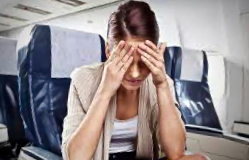
The airline industry maintains that its craft are not flying clinics, however, that health professionals are not necessarily aboard every plane. Neither are flight attendants are not medically trained (or nurses, as in earlier days of air travel). Rather, cabin crews today mainly are versed in CPR, administering supplemental oxygen, assisting in sudden labor and/or spotting potential spells and ills.
Above all, attendants are trained to stabilize afflicted passengers through flight diversions and even (costly) emergency landings until ground-based consultation services can be provided.
Going forward, Vamigré will closely monitor air carrier compliance with the AMA Act (in the current face of over 12,000 reported onboard emergencies and medical events, as well as attendant services in other commercial travel modes…
>>> Service vs. Support Animals Onboard.

